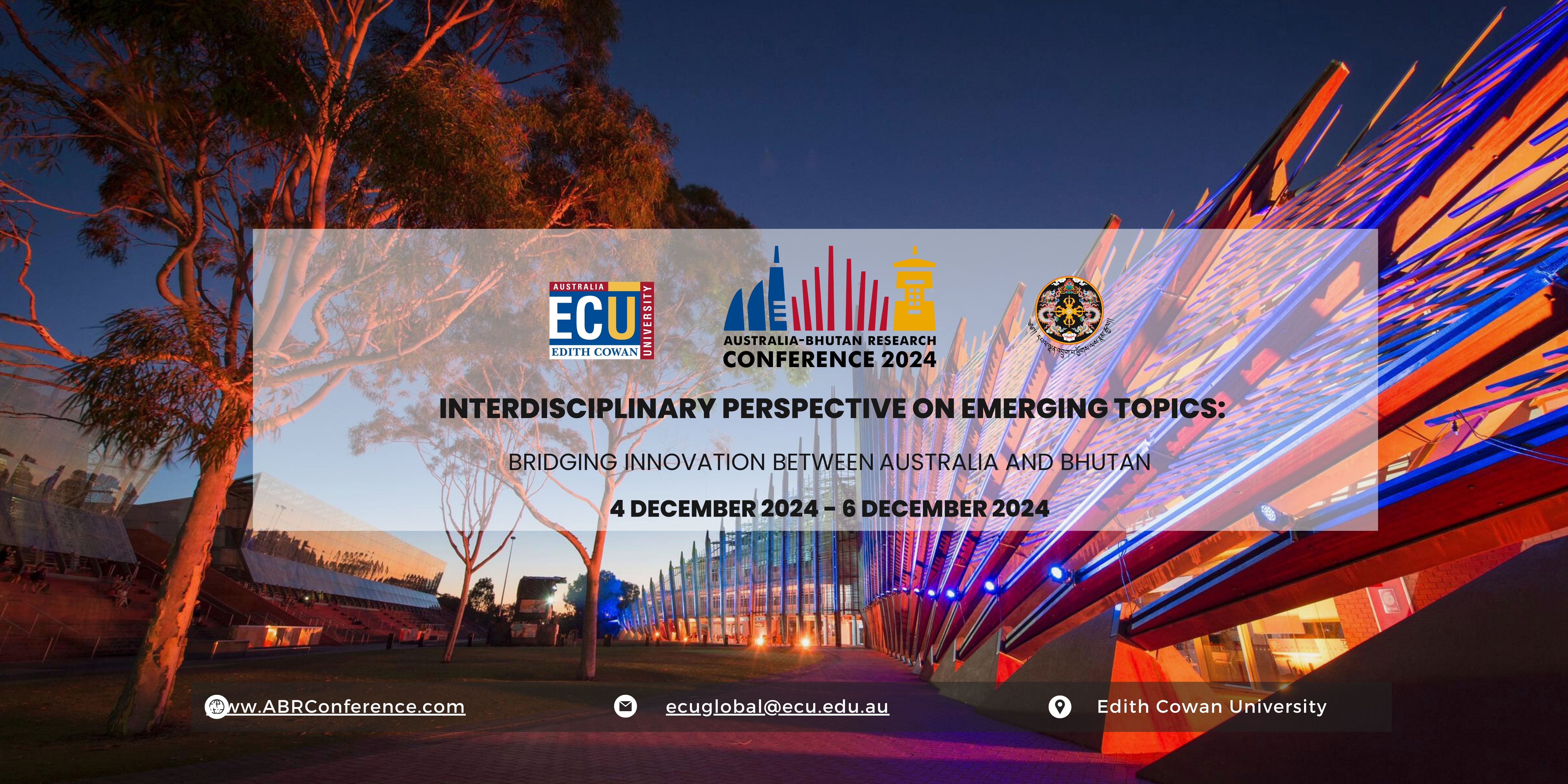Integrating cultural heritage and environmental stewardship in tourism development: A comparative study of North Queensland and Bhutan
Presenter(s) ORCID:
Madura Thivanka Pathirana: https://orcid.org/0000-0001-8784-3833
Loading...
Start Date
5-12-2024 2:25 PM
Presentation Type
Presentation
Keywords
cultural heritage, environmental stewardship, sustainable tourism, Bhutan tourism
Abstract
Bhutan, known for its rich cultural heritage and pristine landscapes, faces the challenge of preserving its heritage while promoting sustainable tourism. As of 2021, Bhutan had 3,818 establishments engaged in tourism services, with 274,097 foreign guests visiting in 2019, a 7.61% increase from the previous year. This growing number of tourists, while beneficial economically, could jeopardize Bhutan’s vision of low-impact tourism. This research seeks innovative solutions by examining North Queensland's tourism attractions, specifically Mossman Gorge and the Daintree Discovery Centre, highlighting the integration of cultural preservation with environmental sustainability. This comparative study used a mixed-methods approach, combining qualitative and quantitative data. In Australia, empirical data on visitor behavior, management practices, and conservation efforts were gathered through personal observations and three interviews with local communities, tourism operators, and policymakers. Additionally, one interview with Bhutan tourism officials provided deeper insights into strategies for harmonizing tourism development with cultural and environmental stewardship, as well as understanding key issues. The research findings emphasize the need for equipping emerging leaders in Bhutan’s tourism sector with innovative strategies and tools to foster societal impact. The significant increase in the Sustainable Development Fee from USD 65 to USD 100 per person per night could be utilized more wisely for these activities. This policy shift focuses on improving infrastructure, enhancing visitor experiences, and mitigating cultural and environmental impacts. Adapting successful strategies from North Queensland, Bhutan can promote environmental conservation and cultural preservation, enhancing visitor experiences through meaningful and educational activities. Eco-tourism programs at Mossman Gorge and the enhanced visitor experience at the Daintree Discovery Centre serve as exemplary models. For instance, Bhutan can foster community participation similar to Mossman Gorge by empowering local communities in tourism planning and management, ensuring sustainable and culturally sensitive practices. Training programs for local leaders and educational initiatives for tourists and locals, as implemented at the Daintree Discovery Centre, can further promote cultural and environmental stewardship. Additionally, community-based tourism in Bhutan should be formalized with continuous development opportunities by linking with development agencies and the public sector. Innovative solutions such as heritage trails, sustainable tourism certifications, and digital platforms for information can advance Bhutan’s tourism development objectives. Bhutan’s eco-tourism experiences, such as The Trans Bhutan, Gangtey Nature Trail, and the Phobjikha Valley, renowned for its Black-Necked Crane Festival, highlight the integration of cultural preservation with environmental sustainability. These strategies can be transferred to more sustainable and regenerative approaches. By adopting these strategies, Bhutan can drive economic growth while preserving its cultural heritage and natural environment for future generations.
Recommended Citation
Pathirana, M., D., Choden, K. & Thinley, J. (2024). Integrating cultural heritage and environmental stewardship in tourism development: A comparative study of North Queensland and Bhutan. Australia Bhutan Research Conference. Edith Cowan University. https://ro.ecu.edu.au/abr_conference/2024/Thursday_December_5th/3
Integrating cultural heritage and environmental stewardship in tourism development: A comparative study of North Queensland and Bhutan
Bhutan, known for its rich cultural heritage and pristine landscapes, faces the challenge of preserving its heritage while promoting sustainable tourism. As of 2021, Bhutan had 3,818 establishments engaged in tourism services, with 274,097 foreign guests visiting in 2019, a 7.61% increase from the previous year. This growing number of tourists, while beneficial economically, could jeopardize Bhutan’s vision of low-impact tourism. This research seeks innovative solutions by examining North Queensland's tourism attractions, specifically Mossman Gorge and the Daintree Discovery Centre, highlighting the integration of cultural preservation with environmental sustainability. This comparative study used a mixed-methods approach, combining qualitative and quantitative data. In Australia, empirical data on visitor behavior, management practices, and conservation efforts were gathered through personal observations and three interviews with local communities, tourism operators, and policymakers. Additionally, one interview with Bhutan tourism officials provided deeper insights into strategies for harmonizing tourism development with cultural and environmental stewardship, as well as understanding key issues. The research findings emphasize the need for equipping emerging leaders in Bhutan’s tourism sector with innovative strategies and tools to foster societal impact. The significant increase in the Sustainable Development Fee from USD 65 to USD 100 per person per night could be utilized more wisely for these activities. This policy shift focuses on improving infrastructure, enhancing visitor experiences, and mitigating cultural and environmental impacts. Adapting successful strategies from North Queensland, Bhutan can promote environmental conservation and cultural preservation, enhancing visitor experiences through meaningful and educational activities. Eco-tourism programs at Mossman Gorge and the enhanced visitor experience at the Daintree Discovery Centre serve as exemplary models. For instance, Bhutan can foster community participation similar to Mossman Gorge by empowering local communities in tourism planning and management, ensuring sustainable and culturally sensitive practices. Training programs for local leaders and educational initiatives for tourists and locals, as implemented at the Daintree Discovery Centre, can further promote cultural and environmental stewardship. Additionally, community-based tourism in Bhutan should be formalized with continuous development opportunities by linking with development agencies and the public sector. Innovative solutions such as heritage trails, sustainable tourism certifications, and digital platforms for information can advance Bhutan’s tourism development objectives. Bhutan’s eco-tourism experiences, such as The Trans Bhutan, Gangtey Nature Trail, and the Phobjikha Valley, renowned for its Black-Necked Crane Festival, highlight the integration of cultural preservation with environmental sustainability. These strategies can be transferred to more sustainable and regenerative approaches. By adopting these strategies, Bhutan can drive economic growth while preserving its cultural heritage and natural environment for future generations.


